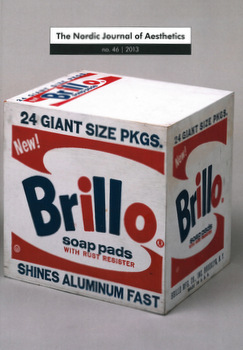Between Signsystems and Affects
DOI:
https://doi.org/10.7146/nja.v23i46.16379Keywords:
Lessing, Laocoon, affects, history of aestheticsAbstract
Gotthold Ephraim Lessing’s Laocoon (1766) saw that the signification of art cannot be dissociated from its media. A visual work of art and a literary work originates in different spatial and temporal conditions, Lessing argued, serving thereby to liberate art from the tradition of ut pictura poesis. Lessing’s impact has been discussed in the tradition of modernism through Babbitt, Eisenstein and Greenberg, and there been associated with the notion that the work of art is autonomous. In Lessing’s own text, however, there is no clear conception of a work of art “an sich”. Instead, the work of art is characterized in an indirect manner, through the sense perception of the reader or viewer. Lessing’s Laocoon can be rethought from the perspective of affect. In his text, the human body has a central place, and Lessing’s investigation into the signification of the Laocoon can be formulated as the question: How does the embodied mind respond to the image of a human body? Departing from this concern, Lessing’s text does not only look at the object of aesthetics; it constructs an aesthetic subject, in which the embodied conditioning of sense perception and the question of affect is central. Making the statue of Laocoon a primary example in his study, Lessing inserts himself in a long tradition of the study of affects where Laocoon represents the most pain that a human can bear, whether that pain is corporeal or emotional.
Downloads
Published
How to Cite
Issue
Section
License
Authors who publish with this journal agree to the following terms:
- Authors retain copyright and grant the journal right of first publication with the work simultaneously licensed under a Creative Commons Attribution License that allows others to share the work with an acknowledgement of the work's authorship and initial publication in this journal.
- Authors are able to enter into separate, additional contractual arrangements for the non-exclusive distribution of the journal's published version of the work (e.g., post it to an institutional repository or publish it in a book), with an acknowledgement of its initial publication in this journal.
- Authors are permitted and encouraged to post their work online (e.g., in institutional repositories or on their website) prior to and during the submission process, as it can lead to productive exchanges, as well as earlier and greater citation of published work (See The Effect of Open Access).




